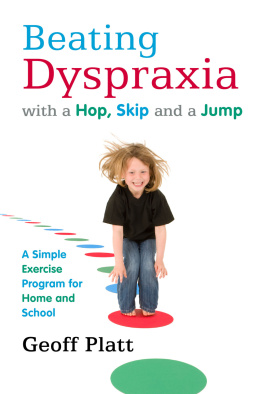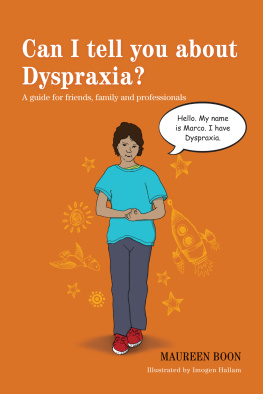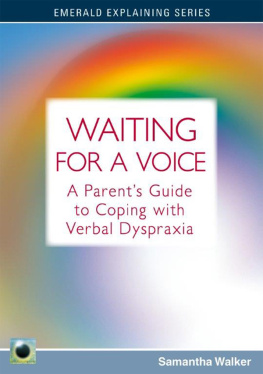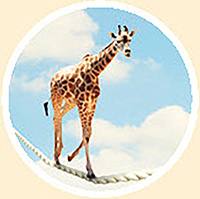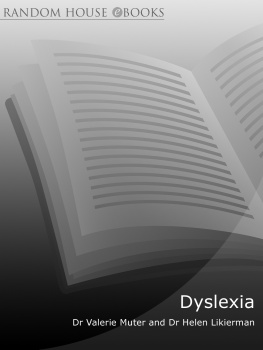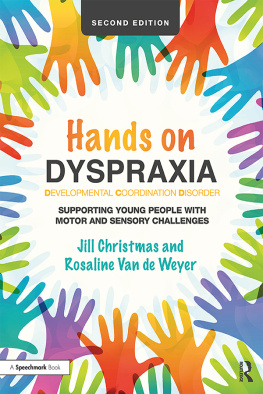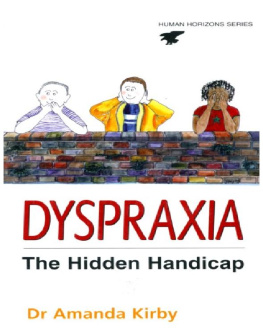Acknowledgements 
I would like to start by thanking the man who has done the most to make this work happen, Dr John Sproule.
The research would not have been possible without the support of a number of schools in Croydon and I would like to express my appreciation for their support and assistance.
Gresham Primary School
Keston Primary School
Oval Primary School
Rowdown Primary School
Wolsey Primary School
I would also like to thank Dr Nikos Papadakis, who collaborated on the entropy research, Professor Mohsen Shafizadeh, who collaborated with the movement skills research and Mrs Signa Ashdown who came to my assistance on several cold winter days when there were just too many children for me alone!
Finally, to my family, for their love and support and their understanding for those times during my research when I was not around. To my wife, Annette and my daughters, Jennifer, Laura and Eleanor.
Author Index 
American Psychiatric Association
Arnheim, D.D.
Ayres, A.J.
Baden-Powell, Robert
Baechle, T.R.
Bairstow, P.J.
Bayley, N.
BBC
Behm, D.G.
Berkey, C.S.
Biddle, S.J.H.
Biggs, Victoria
Blythe, P.
Boon, M.
Booth, S.L.
Bouchard, C.
Branta, C.
Brierley, J.
British Association of Sports and Exercise Sciences (BASES)
British Medical Journal
Brookes, G.
Bruininks, R.H.
Burton, A.W.
Chandler, T.J.
Christina, R.W.
Colley, Mary
Cooper, R.A.
Coster, W.
Crawford, S.
Crippen, K.J.
Croisier, J.-L.
Davis, W.E.
Department for Education
Department for Education and Science
Dewey, D.
Dick, F.W.
Dodds, J.B.
Drew, S.
Dyson, Geoff
Earle, R.W.
Ellingsen, O.
Enoka, R.M.
Ersing, W.F.
Faigenbaum, A.D.
FarnhamDiggory, S.
Fewell, R.R.
Fleck, S.J.
Folio, M.R.
Fountain, C.
Frankenburg, W.K.
FSA
Gallahue, D.L.
Gervis, M.
Getchell, N.
Geuze, R.
Griffiths, R.
HaddersAlgra, M.
Haley, S.M.
Hamill, B.P.
Hartley, K.
Harvey, J.S.
Haubenstricker, J.
Haywood, K.M.
Heiser, T.M.
Henderson, S.E.
Hippocrates
Huntington, G.S.
Kemi, O.
Kennedy, J.F.
Keogh, J.F.
Kephart, N.C.
Kirby, A.
Kolata, G.
Kraemer, W.J.
Kurtz, L.A.
Lazlo, J.I.
Lee, M.
Lehmkuhle, K.
Livingstone, M.S.
Loovis, E.M.
McClenaghan, B.A.
McCreight, B.
Macintyre, C.
McMillen, J.S.
Magill, R.A.
Martens, R.
Nordau, Max
Oliveira, M.A.
Orton, Samuel
Ozmun, J.C.
Pearson, D.
Piaget, J.
Platt, G.K.
Pollard, I.
Pomeroy, S.B.
Raff, H.
Raynor, Annette
Roach, E.G.
Rowland, T.W.
Sandercock, G.
Sands, W.A.
Sapp, M.
Schmidt, R.A.
Schraw, G.
Seefeldt, V.
Sharkey, B.J.
Simeonsson, R.J.
Sinclair, W.A.
Smith, A.
Smith, Graham
State, Oscar
Steele, C.A.
Stein, J.
Stone, M.
Strang, K.
Stratton, G.
Sugden, D.A.
Touwen, B.C.L.
Tucker, L.
Ulrich, D.A.
US Department of Health and Human Services
van der Ploeg, H.P.
Victor, J.D.
Walker, B.
Washington, R.L.
Westcott, W.L.
Widmaier, E.
Williams, M.
Wilson, B.N.
Wislett, U.
World Health Organization
Wright, H.C.
Wrisberg, C.A.
Zatsiorsky, V.M.
Extracts from Kirby and Drew 2003 on p.1819, 24 and 2627 are reproduced by permission of David Fulton DSM material on p.2122 is reproduced by permission of American Psychiatric Publishing, Inc. drawn by Jenni Platt
First published in 2011
by Jessica Kingsley Publishers
73 Collier Street
London N1 9BE, UK
and
400 Market Street, Suite 400
Philadelphia, PA 19106, USA
www.jkp.com
Copyright Geoff Platt 2011
All rights reserved. No part of this publication may be reproduced in any material form (including photocopying or storing it in any medium by electronic means and whether or not transiently or incidentally to some other use of this publication) without the written permission of the copyright owner except in accordance with the provisions of the Copyright, Designs and Patents Act 1988 or under the terms of a licence issued by the Copyright Licensing Agency Ltd, Saffron House, 610 Kirby Street, London EC1N 8TS. Applications for the copyright owners written permission to reproduce any part of this publication should be addressed to the publisher.
Warning: The doing of an unauthorized act in relation to a copyright work may result in both a civil claim for damages and criminal prosecution.
Library of Congress Cataloging in Publication Data
Platt, Geoff, 1955
Beating dyspraxia with a hop, skip, and a jump: a simple exercise program for home and school / Geoff Platt.
p. ; cm.
Includes bibliographical references.
ISBN 978-1-84905-171-2
1. Apraxia--Exercise therapy. 2. Motor ability in children. 3. Movement disorders in children. I. Title.
[DNLM: 1. Apraxias--therapy. 2. Child. 3. Exercise Therapy-- methods. 4. Motor Skills Disorders--therapy. WL 340]
RJ496.A63P53 2011
618.928552--dc22
2010042008
British Library Cataloguing in Publication Data
A CIP catalogue record for this book is available from the British Library
ISBN 978 1 84905 171 2
eISBN 978 0 85700 416 1
Beating Dyspraxia with a
Hop, Skip and a Jump
of related interest
Cant Play Wont Play
Simply Sizzling Ideas to Get the Ball Rolling for Children with Dyspraxia
Sharon Drew and Elizabeth Atter
ISBN 978 1 84310 601 2
Understanding Dyspraxia
A Guide for Parents and Teachers
2nd edition
Maureen Boon
ISBN 978 1 84905 069 2
JKP Essentials Series
Understanding Motor Skills in Children with Dyspraxia, ADHD, Autism, and Other Learning Disabilities
A Guide to Improving Coordination
Lisa A. Kurtz
ISBN 978 1 84310 865 8
JKP Essentials Series
How to Help a Clumsy Child
Strategies for Young Children with Developmental Motor Concerns
Lisa A. Kurtz
ISBN 978 1 84310 754 5
Part I
The Background
Part II
The Exercise Program
Preface 
A number of observers have identified that children with dyspraxia have weak muscles, particularly in their fingers, hands and wrists. Despite these observations, and the fact that strength has been identified as improving the symptoms of those with cerebral palsy, whilst dyspraxia has been referred to as minimal cerebral palsy, only four pieces of research into the effects of strength and strength training on dyspraxia appear to have been published.
Between 1989 and 2001, an Australian sports physiologist by the name of Annette Raynor researched strength as an issue for children with dyspraxia and published two papers on the results of her research. She showed that there was a correlation between children with dyspraxia and children with poor isometric leg strength and showed that this was linked to poor muscle activation and co-activation.
Next page
